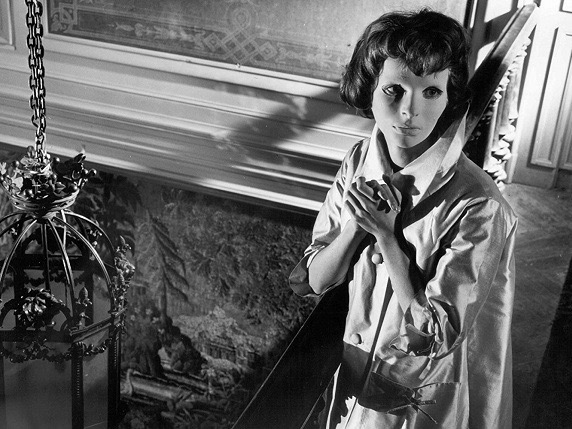
A surgeon causes an accident which leaves his daughter disfigured, and goes to extremes to give her a new face and restore her former beauty.
“She is a magic person. She gives the unreal reality.”
Georges Franju
“The real poetry of Eyes Without A Face comes from Scob’s Christiane, and that eerie mask, which makes her look like a ghost or porcelain doll, cursed to explore the inside of her father’s gilded cage. When she looks upon one of her father’s abductees, her eyes aren’t covetous, but full of pity for the victim and herself, both trapped by her father’s maniacal vanity. Christiane eventually takes action, but between the mask and the casting of the delicate, wraith-like Scob, she drifts through the film in half-corporeal form, simultaneously as terrifying as a ghost and as fragile as a child.
And therein lies the allure of Eyes Without A Face, which occupies the space between genre worlds just as Christiane hovers in a kind of limbo between life and death. It was funneled into the early-1960s American horror pipeline under the ridiculous title The Horror Chamber Of Dr. Faustus, and nothing in its pulpy premise would made it inappropriate as half a B-movie double-bill. But Franju’s Cocteau influence nearly takes it out of the horror realm altogether, and into a sad, beautiful, heightened reality of his own creation. There’s no other movie quite like it.”
Scott Tobias1

“Christiane is one of the few female protagonists in a century of horror cinema to transition from victim, to monster, to ultimately become the hero of her own story, an angelic figure of liberation. Like the furies of Aeschylus’s The Eumenides, the third part of the Oresteia, she serves to restore order to the natural world while embracing the notion that this world may hold no future for her.”
Samm Deighan2
- 1Scott Tobias, “Eyes Without a Face,” The Dissolve.
- 2Samm Deighan, “Feminine Fury Revisited: Georges Franju’s Eyes Without a Face,” Diabolique Magazine, 24 October, 2017.

